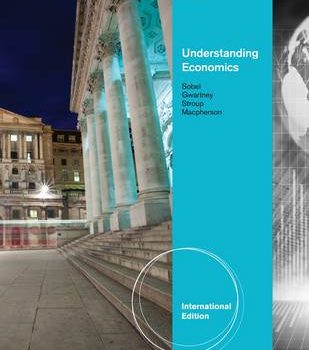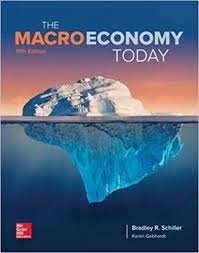Test Bank For The Economy Of Nature 6th Edition By Ricklefs
Name Test Bank Chapter 04 Description
Instructions
At large spatial scales, global or continental in scope, climate is the primary determinant of the physical environment of the biota. Climate for a location can be characterized by long-term averages of such variables as temperature and precipitation. Patterns of variation, including seasonal or longer-term fluctuations, are equally important to living organisms and must be characterized as well. You have learned much in Chapter 4 about these larger-scale patterns of climatic variation and their causes. Now, imagine that you are a regional climatologist with special expertise in Western Hemisphere climates. You are, in a sense, a “climate forecaster,” using your understanding of past and present climate to help others plan for the future. Please put your knowledge of climate to work and answer the following short answer/essay questions.
|
Question 1
|
Essay
|
Question You have been asked to address an international conference on climatology. Your task is to discuss causes of seasonal variation of precipitation in the tropics. You know that the intertropical convergence creates a belt of relatively high precipitation that encircles the globe. What do you tell your audience about the seasonal pattern of latitudinal movement of the intertropical convergence?Answer The intertropical convergence is centered around the solar equator, the latitude where the sun is directly overhead at noon on any day of the year. The solar equator and the earth’s equator (0° latitude) are one and the same on the equinoxes (March 21 and September 21). The solar equator (and thus the center of the intertropical convergence) migrates northward from the earth’s equator during the Northern Hemisphere summer, reaching its greatest northward location (23.5°N) on the summer solstice (June 21). Similarly, the solar equator migrates southward from the earth’s equator during the Southern Hemisphere summer, reaching its greatest southward location (23.5°S) on the winter solstice (December 21).Question
|
Question 2
|
Essay
|
Using Figure 4.10 (above) and your answer to the previous question as guides, consider the following problem. You have been asked to make recommendations for a botanical garden that will be used to propagate rare plants being threatened by forestry operations around the city of Mérida in the Yucatán Peninsula. Two sites for this garden are currently available, one in Bogotá, Colombia, the other in Rio de Janeiro, Brazil. Which of these two sites would you recommend for establishment of this garden and why?Answer You know that seasonality of precipitation is important to plants. The Mérida and Rio de Janeiro sites would be most similar in this respect, each having a single rainy season during the local summer months. The principal difference between the two cities would be a 6-month shift in the timing of the summer rainy season. Bogotá would be a less suitable location for this garden because its location closer to the earth’s equator results in two passes of the intertropical convergence and thus two distinct rainy seasons each year. The plants from Mérida would probably not adjust as well to the dual rainy seasons of Bogotá.Question A consultant from the San Diego Zoo (located at approximately 35°N latitude in the United States) asks you where in South America she might visit to observe and collect animals living in a precipitation regime comparable to that of southern California. What is your recommendation?Answer You know that southern California lies just beyond the summer rainfall
|
Question 3
|
Essay
|
belt of the intertropical convergence and is influenced by the subtropical high-pressure belt during the summer months. Thus the summers in San Diego are hot and dry, but the winters there are cooler and moister because the subtropical high-pressure belt moves far to the south in winter. Thus San Diego has a Mediterranean climate, similar in many respects to that of parts of central Chile (e.g., Valparaiso) at similar latitude.Question The consultant from the San Diego Zoo is also interested in desert animals of the Chihuahuan Desert, centered in northern Mexico at latitude of about 30°N. She has never visited the Chihuahuan Desert and asks you to contrast its climate with that of San Diego.Answer The Chihuahuan Desert lies near the northern extreme of the intertropical convergence’s position in the Northern Hemisphere summer. Thus this desert receives summer precipitation, but lies well within the subtropical high-pressure belt during winter and receives little or no winter precipitation. The seasonality of precipitation is thus just the opposite of that found in San Diego.Question Zoologists from Peru and Chile have been examining climatological records from the coastal deserts of their countries. These deserts are the driest on earth, yet they lie within the southward reach of the intertropical convergence during the Southern Hemisphere summer. You are asked by these zoologists to explain this curious phenomenon. Can you provide them with an explanation?Answer Two factors contribute to extreme dryness along the Pacific coasts of Peru and Chile. Both lie in the rain shadow of the Andes Mountains. Running northward along shore is the cold Peru Current of the eastern Pacific Ocean. Moist air masses moving eastward from the Pacific will lose much of their moisture as they are cooled by passage over the cold waters of the Peru Current. These coastal deserts are thus effectively blocked from receiving any precipitation either from the east or the west.Question Despite their legendary dryness, the deserts of coastal Peru and Chile may receive precipitation during ENSO (El Niño-Southern Oscillation) events. Your zoologist colleagues ask you to explain why rainfall was recorded for the first time in over a century in the deserts of northern Chile during the record El Niño of 1982-83.Answer During an El Niño, warm tropical waters push southward along the western coast of South America, displacing the cold waters of the Peru current. Temporary displacement of cold coastal waters can permit moisture-laden oceanic air to penetrate inland in these normally dry areas.
|
Question 4
|
Essay
|
|
Question 5
|
Essay
|
|
Question 6
|
Essay
|
|
Question 7
|
Essay
|
Question “The surface of the earth, its waters, and the atmosphere above it make up a giant heat-transforming machine.” What does Dr. Ricklefs mean by this statement from Chapter 4?Answer Much of the solar energy striking the earth’s surface (both landmasses and oceans) is absorbed, resulting in surface heating. Heating of the earth is greatest in the tropics and least near the poles because of the uneven distribution of solar energy across the earth’s surface. Someof the energy absorbed by the earth is transferred directly to the atmosphere by convective transfer and reradiation. One result of all these energy transformations is the circulation of the earth’s atmosphere and oceans, as discussed in Chapter 4. One result of atmospheric and oceanic circulation is the redistribution of heat poleward, resulting in more equable climates worldwide than would be possible without such circulation. Energy absorbed by the earth also powers the water cycle by evaporation of water from land and ocean surfaces. Eventually, all solar energy absorbed by the earth is reradiated to space. Thus the earth is indeed a giant heat-transforming machine, using solar energy to perform useful work (at least from a human perspective) and ultimately returning this energy to space.Question Seasonal variation in temperature at higher latitudes is greater in the northern hemisphere than it is in the southern hemisphere. Why?Answer Temperatures vary more seasonally in the northern hemisphere because less of the earth¿s surface is covered by oceans. Large bodies of water tend to moderate changes in temperature, owing to the enormous heat capacity of water. With less water to moderate temperatures, the northern hemisphere experiences greater variation in temperature as a function of seasonal changes in the input of solar energy.Question Biological activity is severely limited in a thermally stratified temperate lake in mid-summer. Explain this phenomenon with reference to both surface and deeper waters.Answer Because a thermally stratified lake does not circulate water from the surface to the depths and back again, stagnation of biological processes results. Surface waters are enriched with oxygen and are illuminated by the sun, but depletion of nutrients (which must be replenished from deeper waters in contact with bottom sediments) severely limits the productivity of plants and the activities of animals that ultimately depend on plants for their food. In contrast, the nutrient- rich deeper waters lack sunlight and are oxygen-depleted, resulting in limited biological activity there. When the lake turns over in the fall, oxygen levels will increase in deeper waters and the surface waters will become more nutrient-rich, stimulating biological activity throughout the lake.Question The physical changes associated with El Niño events can cause
|
Question 8
|
Essay
|
|
Question 9
|
Essay
|
|
Question 10
|
Essay
|
|
cascading biological events, leading to dramatic fluctuations worldwide in populations of plants and animals. Describe, in your own words, the ecological consequences of an El Niño for a particular part of the world.Answer Several examples are presented in the text. For example, extreme El Niño conditions are associated with below-average precipitation in Zimbabwe, leading to reduced yield of maize (corn) and human starvation.Question In the temperate zone of the Northern Hemisphere, south-facing slopes of mountains are warmer and drier than north-facing slopes at the same elevation; vegetation growing on these different slopes will reflect the difference in local climate. Why is this?Answer During the midday hours, when solar radiation is most intense, the sun is always to the south in the temperate zone of the Northern Hemisphere. This results in more intense surface heating and greater evaporation of water from soils and plants on south-facing slopes of mountains. Air temperatures are also higher, resulting in greater evaporative demand. Plants and animals living on south-facing slopes experience these environmental effects and respond accordingly.Question When a mountain range is exposed to prevailing winds from a particular direction, the windward side of the range (the side facing the prevailing winds) receives more precipitation than the leeward side (the side facing away from the prevailing winds). Low-lying areas to the leeward side of the range also tend to be much drier than areas at similar elevation to the windward side of the range. Explain these phenomena in detail.Answer An air mass moving over a mountain range is forced upward into the atmosphere, where pressure is reduced. The air mass expands and undergoes adiabatic cooling. As the air cools, its capacity to hold moisture is reduced, often to the point where excess moisture falls to the ground as precipitation, primarily at higher elevations and mostly on the windward side of the range. As the air mass, now depleted of moisture, descends, it is compressed and warms (because of adiabatic heating). Its capacity to hold moisture is greatly increased upon heating, but its ability to be recharged with moisture is limited. Little precipitation will fall at lower elevations on the leeward side of the range, resulting in an arid environment known as a rain shadow. Low-lying areas to the leeward side of the range will also be dry because the air passing over them is relatively warm and dry, unlikely to yield further moisture as precipitation.Question The energy of incident solar radiation reaching the surface of the earth declines toward the poles from its maximum in equatorial regions. Why is this?
Answer
Cold air absorbs more solar radiation than warm air.A given amount of solar radiation is spread over a larger area at
|
higher latitudes.Solar radiation travels a longer path through the earth’s atmosphere at higher latitudes.Both A and B are true. Both B and C are true.Question Which of the following increases as one moves poleward from the tropics?
|
Question 14
|
Multiple Choice
|
Answer
length of the growing season mean annual temperature seasonal variation in temperature all of the above









Reviews
There are no reviews yet.